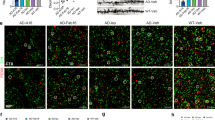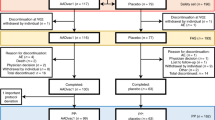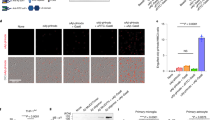Abstract
Amyloid-β (Aβ) plays a crucial part in the pathogenesis of Alzheimer disease (AD), making this peptide an attractive therapeutic target. However, clearance of brain Aβ in clinical trials of Aβ-specific antibodies did not improve cognition in patients with AD, leading to reassessment of the current therapeutic strategies. Moreover, current immunotherapies are associated with autoimmunity-related adverse effects, and mobilization of neurotoxic insoluble Aβ-oligomers. Despite the fact that antibodies to the N-terminal domain of Aβ can promote Aβ production, immunotherapies in ongoing clinical trials predominantly target this peptide region. Here, we address the challenges of adverse effects of immunotherapy for AD. We discuss available evidence regarding the mechanisms of both endogenous and exogenous Aβ-specific antibodies, with a view to developing optimal immunotherapy based on peripheral Aβ clearance, targeting of the toxic domain of Aβ, and improvement of antibody specificity. Such strategies should help to make immunotherapy a safe and efficacious disease-modifying treatment option for AD.
This is a preview of subscription content, access via your institution
Access options
Subscribe to this journal
Receive 12 print issues and online access
$209.00 per year
only $17.42 per issue
Buy this article
- Purchase on Springer Link
- Instant access to full article PDF
Prices may be subject to local taxes which are calculated during checkout


Similar content being viewed by others
References
Hardy, J. & Selkoe, D. J. The amyloid hypothesis of Alzheimer's disease: progress and problems on the road to therapeutics. Science 297, 353–356 (2002).
Holmes, C. et al. Long-term effects of Aβ42 immunisation in Alzheimer's disease: follow-up of a randomised, placebo-controlled phase I trial. Lancet 372, 216–223 (2008).
Salloway, S. et al. A phase 2 multiple ascending dose trial of bapineuzumab in mild to moderate Alzheimer disease. Neurology 73, 2061–2070 (2009).
Gilman, S. et al. Clinical effects of Aβ immunization (AN1792) in patients with AD in an interrupted trial. Neurology 64, 1553–1562 (2005).
Hyman, B. T. Amyloid-dependent and amyloid-independent stages of Alzheimer disease. Arch. Neurol. 68, 1062–1064 (2011).
Knight, W. D. et al. Carbon-11-Pittsburgh compound B positron emission tomography imaging of amyloid deposition in presenilin 1 mutation carriers. Brain 134, 293–300 (2011).
Khachaturian, Z. S. Revised criteria for diagnosis of Alzheimer's disease: National Institute on Aging-Alzheimer's Association diagnostic guidelines for Alzheimer's disease. Alzheimers Dement. 7, 253–256 (2011).
Yoshizawa, Y. et al. Immune responsiveness to inhaled antigens: local antibody production in the respiratory tract in health and lung diseases. Clin. Exp. Immunol. 100, 395–400 (1995).
Giunta, B. et al. Inflammaging as a prodrome to Alzheimer's disease. J. Neuroinflammation 5, 51 (2008).
Takeuchi, M. & Yamagishi, S. Possible involvement of advanced glycation end-products (AGEs) in the pathogenesis of Alzheimer's disease. Curr. Pharm. Des. 14, 973–978 (2008).
Nicoll, J. A. et al. Neuropathology of human Alzheimer disease after immunization with amyloid-β peptide: a case report. Nat. Med. 9, 448–452 (2003).
Ferrer, I., Boada Rovira, M., Sanchez-Guerra, M. L., Rey, M. J. & Costa-Jussa, F. Neuropathology and pathogenesis of encephalitis following amyloid-beta immunization in Alzheimer's disease. Brain Pathol. 14, 11–20 (2004).
Monsonego, A., Maron, R., Zota, V., Selkoe, D. J. & Weiner, H. L. Immune hyporesponsiveness to amyloid β-peptide in amyloid precursor protein transgenic mice: implications for the pathogenesis and treatment of Alzheimer's disease. Proc. Natl Acad. Sci. USA 98, 10273–10278 (2001).
Monsonego, A. et al. Increased T cell reactivity to amyloid β protein in older humans and patients with Alzheimer disease. J. Clin. Invest. 112, 415–422 (2003).
Wilcock, D. M. et al. Passive immunotherapy against Aβ in aged APP-transgenic mice reverses cognitive deficits and depletes parenchymal amyloid deposits in spite of increased vascular amyloid and microhemorrhage. J. Neuroinflammation 1, 24 (2004).
Patton, R. L. et al. Amyloid-β peptide remnants in AN-1792-immunized Alzheimer's disease patients: a biochemical analysis. Am. J. Pathol. 169, 1048–1063 (2006).
Kaufer, D. & Gandy, S. APOE ɛ4 and bapineuzumab: infusing pharmacogenomics into Alzheimer disease therapeutics. Neurology 73, 2052–2053 (2009).
Racke, M. M. et al. Exacerbation of cerebral amyloid angiopathy-associated microhemorrhage in amyloid precursor protein transgenic mice by immunotherapy is dependent on antibody recognition of deposited forms of amyloid β. J. Neurosci. 25, 629–636 (2005).
Petrushina, I. et al. Alzheimer's disease peptide epitope vaccine reduces insoluble but not soluble/oligomeric Aβ species in amyloid precursor protein transgenic mice. J. Neurosci. 27, 12721–12731 (2007).
Dahlgren, K. N. et al. Oligomeric and fibrillar species of amyloid-β peptides differentially affect neuronal viability. J. Biol. Chem. 277, 32046–32053 (2002).
Shankar, G. M. et al. Amyloid-β protein dimers isolated directly from Alzheimer's brains impair synaptic plasticity and memory. Nat. Med. 14, 837–842 (2008).
Fox, N. C. et al. Effects of Aβ immunization (AN1792) on MRI measures of cerebral volume in Alzheimer disease. Neurology 64, 1563–1572 (2005).
Dodel, R. et al. Naturally occurring autoantibodies against β-amyloid: investigating their role in transgenic animal and in vitro models of Alzheimer's disease. J. Neurosci. 31, 5847–5854 (2011).
Du, Y. et al. Human anti-β-amyloid antibodies block β-amyloid fibril formation and prevent β-amyloid-induced neurotoxicity. Brain 126, 1935–1939 (2003).
Deng, J. et al. Autoreactive-Aβ antibodies promote APP β-secretase processing. J. Neurochem. 120, 732–740 (2012).
Lee, M. et al. Aβ42 immunization in Alzheimer's disease generates Aβ N-terminal antibodies. Ann. Neurol. 58, 430–435 (2005).
Colletier, J. P. et al. Molecular basis for amyloid-β polymorphism. Proc. Natl Acad. Sci. USA 108, 16938–16943 (2011).
Nagele, R. G. et al. Brain-reactive autoantibodies prevalent in human sera increase intraneuronal amyloid-β1–42 deposition. J. Alzheimers Dis. 25, 605–622 (2011).
Wang, Y. J., Zhou, H. D. & Zhou, X. F. Modified immunotherapies against Alzheimer's disease: toward safer and effective amyloid-β clearance. J. Alzheimers Dis. 21, 1065–1075 (2010).
Boche, D. et al. Consequence of Aβ immunization on the vasculature of human Alzheimer's disease brain. Brain 131, 3299–3310 (2008).
Weller, R. O., Subash, M., Preston, S. D., Mazanti, I. & Carare, R. O. Perivascular drainage of amyloid-β peptides from the brain and its failure in cerebral amyloid angiopathy and Alzheimer's disease. Brain Pathol. 18, 253–266 (2008).
Schroeter, S. et al. Immunotherapy reduces vascular amyloid-β in PDAPP mice. J. Neurosci. 28, 6787–6793 (2008).
Siemers, E. R. et al. Safety, tolerability and biomarker effects of an Aβ monoclonal antibody administered to patients with Alzheimer's disease. Alzheimers Dement. 4 (Suppl. 1), T774 (2008).
Sperling, R. et al. Amyloid-related imaging abnormalities in patients with Alzheimer's disease treated with bapineuzumab: a retrospective analysis. Lancet Neurol. 11, 241–249 (2012).
Yamada, K. et al. Aβ immunotherapy: intracerebral sequestration of Aβ by an anti-Aβ monoclonal antibody 266 with high affinity to soluble Aβ. J. Neurosci. 29, 11393–11398 (2009).
Millucci, L., Ghezzi, L., Bernardini, G. & Santucci, A. Conformations and biological activities of amyloid beta peptide 25–35. Curr. Protein Pept. Sci. 11, 54–67 (2010).
Wang, Y. J. et al. p75NTR regulates Aβ deposition by increasing Aβ production but inhibiting Aβ aggregation with its extracellular domain. J. Neurosci. 31, 2292–2304 (2011).
Lemere, C. A. & Masliah, E. Can Alzheimer disease be prevented by amyloid-β immunotherapy? Nat. Rev. Neurol. 6, 108–119 (2010).
Hillen, H. et al. Generation and therapeutic efficacy of highly oligomer-specific β-amyloid antibodies. J. Neurosci. 30, 10369–10379 (2010).
Shughrue, P. J. et al. Anti-ADDL antibodies differentially block oligomer binding to hippocampal neurons. Neurobiol. Aging 31, 189–202 (2010).
US National Library of Medicine. ClinicalTrials.gov [online], (2012).
Acknowledgements
This work was supported by the National Natural Science Foundation of China (grant no. 30973144) and the Natural Science Foundation Project of CQCSTC (grant no. CSTC2010BA5004). The authors thank N. Wei at Daping Hospital of Third Military Medical University for assistance with creating the figures.
Author information
Authors and Affiliations
Contributions
All authors contributed to researching data for the article, discussion of the content, writing the article, and review and/or editing of the manuscript before submission. Y.-H. Liu, B. Giunta and H.-D. Zhou contributed equally to this work.
Corresponding author
Ethics declarations
Competing interests
The authors declare no competing financial interests.
Rights and permissions
About this article
Cite this article
Liu, YH., Giunta, B., Zhou, HD. et al. Immunotherapy for Alzheimer disease—the challenge of adverse effects. Nat Rev Neurol 8, 465–469 (2012). https://doi.org/10.1038/nrneurol.2012.118
Published:
Issue Date:
DOI: https://doi.org/10.1038/nrneurol.2012.118



